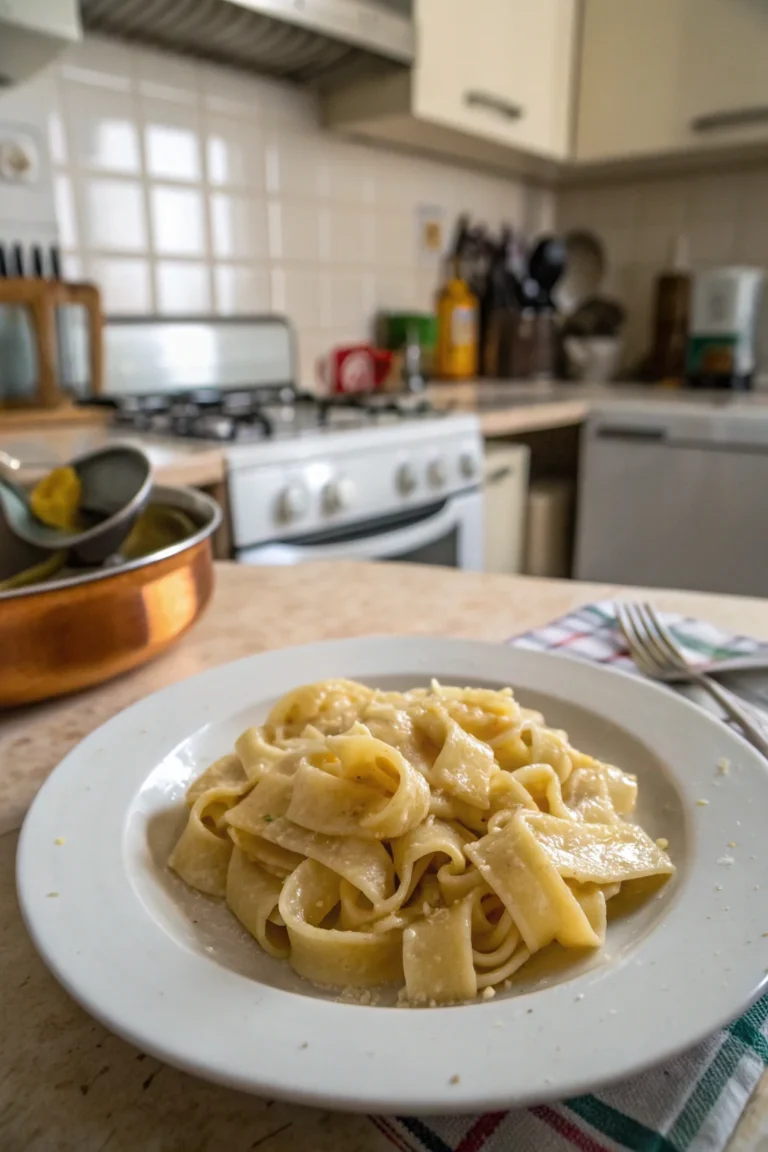Can You Freeze Mashed Potatoes? | Step-by-Step Storage Tips
Mashed potatoes are a beloved side dish in many households, but sometimes you might find yourself with more than you can eat. Whether you’re preparing for a big holiday meal or simply overestimated your potato cravings, leftovers can be inevitable. So, what do you do with the leftovers? A common question is, “Can you freeze mashed potatoes?” The answer is yes! Freezing mashed potatoes is a great way to preserve them for future meals, but there are some important steps to ensure they maintain their creamy texture and rich flavor. In this article, we’ll explore frequently asked questions about freezing mashed potatoes and provide useful tips for storing them effectively.
Table of Contents
What Is the Best Way to Freeze Mashed Potatoes?

To freeze mashed potatoes successfully, follow these steps:
Cool Completely: Allow the mashed potatoes to cool to room temperature. This is crucial as it prevents condensation, which can lead to ice crystals forming when the potatoes are frozen. These ice crystals can ruin the texture of the potatoes.
Portion Out: Divide them into individual servings or meal-sized portions. This makes it easier to thaw only what you need, reducing waste. You can use a measuring cup to ensure each portion is consistent, which is especially helpful if you’re planning meals in advance.
Use Airtight Containers: Transfer the portions into airtight containers or freezer bags. Remove as much air as possible to prevent freezer burn. Freezer bags can be laid flat, saving space and allowing for faster freezing and thawing. If using containers, make sure they are filled to the brim to minimize air exposure.
Label and Date: Clearly mark the containers with the date they were frozen and the portion size if not obvious. This helps you keep track of their freshness and plan meals accordingly.
Freeze: Place them in the freezer in a single layer, if possible. Once frozen, you can stack the bags or containers to save space.
Following these steps ensures that your mashed potatoes will freeze well and retain their quality. Remember that the quicker the potatoes freeze, the better they will taste when reheated.
How Long Can You Freeze Mashed Potatoes?
Mashed potatoes can be stored in the freezer for up to three months. After this period, they may start to lose flavor and texture. The fats used in the mashed potatoes, such as butter and cream, can help extend their shelf life by protecting against freezer burn. To ensure they remain delicious, try to use them within the recommended timeframe. Always check for signs of freezer burn or off-smells before reheating. Freezer burn appears as dry, white patches on the surface of the potatoes and can affect texture and taste.
Do Mashed Potatoes Change Texture When Frozen?
While freezing mashed potatoes can slightly change their texture, using the right techniques can minimize this effect. The key is to incorporate plenty of fat—such as butter or cream—into the mash. This helps maintain the creamy consistency. Fat acts as a barrier, protecting the potato cells from the harsh cold and preventing them from becoming grainy.
When reheating, adding a splash of milk or cream can also help restore the original texture. A dollop of sour cream or a bit of cream cheese can also add back moisture and creaminess while enhancing the flavor. It’s best to reheat them slowly, as rapid heating can cause the potatoes to become rubbery.
Can You Freeze Mashed Potatoes with Milk and Butter?
Yes, you can freeze mashed potatoes with milk and butter. In fact, adding these ingredients helps preserve the texture and flavor. The fat content in butter and cream prevents the potatoes from becoming grainy. Ensure the potatoes are well-mixed before freezing to distribute the fats evenly. This uniform distribution prevents any parts of the potatoes from being left dry, which would otherwise lead to uneven texture after thawing.
How Do You Thaw Frozen Mashed Potatoes?

To thaw frozen mashed potatoes, transfer them from the freezer to the refrigerator and let them thaw overnight. This gradual thawing process helps maintain their texture. Sudden temperature changes can cause the potatoes to release water, resulting in a runny consistency.
If you’re in a hurry, you can defrost them in the microwave using the defrost setting, stirring occasionally. This method is faster but requires careful attention to avoid overheating certain parts while others remain frozen. Stirring helps distribute the heat evenly. Alternatively, you can place the frozen potatoes in a sealed bag in a bowl of cold water for quicker thawing, changing the water every 30 minutes.
How Do You Reheat Frozen Mashed Potatoes?
Reheat frozen mashed potatoes by placing them in a saucepan over low heat. Stir frequently to prevent sticking and ensure even heating. This method allows you to control the heat and add any additional ingredients like milk or butter as needed.
Alternatively, you can reheat them in the microwave, stirring occasionally. Use a microwave-safe dish and cover it to retain moisture. Set the microwave to medium power to avoid overheating and stir every minute or so.
Add a small amount of milk or butter to enhance the texture and flavor during reheating. If you’re using the stovetop, add these ingredients gradually, stirring until the potatoes reach the desired consistency. For a richer flavor, consider incorporating roasted garlic or a sprinkle of herbs like thyme or chives.
Can You Refreeze Mashed Potatoes Once Thawed?
It’s not recommended to refreeze mashed potatoes once they’ve been thawed. Refreezing can lead to further texture degradation and potential loss of flavor. Each freeze-thaw cycle tends to extract moisture and alter the texture, making them less creamy and more prone to becoming watery.
Instead, only thaw the amount you plan to use to avoid waste. If you find that you have thawed more than needed, consider using the leftovers in creative ways such as making potato cakes or incorporating them into a casserole.
Can You Freeze Mashed Potatoes with Cheese?
Yes, mashed potatoes with cheese can be frozen. Cheese adds flavor and helps maintain the creamy texture. Ensure the cheese is well incorporated into the potatoes before freezing. This ensures even distribution and prevents the cheese from clumping, which can happen if added after freezing.
When reheating, consider adding a bit more cheese for extra flavor. A sprinkle of parmesan or cheddar can elevate the dish, making it taste freshly made. You can also add a touch of garlic powder or smoked paprika to enhance the cheesy flavor profile.
Are There Any Mashed Potatoes That Should Not Be Frozen?
Mashed potatoes made without added fats like butter or cream might not freeze well. The lack of fat can lead to a grainy texture. Similarly, mashed potatoes with high moisture content, such as those made with broth instead of dairy, may not freeze as successfully. The water content can cause ice crystals to form, leading to a watery texture upon reheating.
For best results, opt for recipes that include fats or consider adding them before freezing. If you’re preparing a large batch, reserve a portion with added fats for freezing.
Is It Safe to Freeze Mashed Potatoes with Garlic or Other Seasonings?
Yes, you can freeze mashed potatoes with garlic or other seasonings. However, the intensity of the flavors may increase after freezing. This is due to the concentration of flavors as moisture content changes during freezing and thawing.
Taste and adjust the seasoning after reheating, if necessary. If you find the flavors too strong, mellow them out by adding a bit of cream or butter. Conversely, if the flavors have dulled, a sprinkle of fresh herbs or a squeeze of lemon can brighten the dish.
How Can You Prevent Freezer Burn on Mashed Potatoes?
To prevent freezer burn, ensure the mashed potatoes are stored in airtight containers or freezer bags. Removing as much air as possible before sealing is crucial. A vacuum sealer can be particularly effective, but manually pressing air out of bags works well too.
Additionally, maintaining a consistent freezer temperature helps prevent freezer burn. Avoid frequent opening of the freezer, as this can cause temperature fluctuations. Store the potatoes in the coldest part of the freezer, usually against the back wall, to ensure they remain at a stable temperature.
What Are Some Creative Uses for Frozen Mashed Potatoes?
Frozen mashed potatoes can be used in various dishes:
Shepherd’s Pie: Use them as a topping. Simply spread the thawed potatoes over cooked meat and vegetable filling, and bake until golden brown.
Potato Pancakes: Mix with eggs and flour, then fry. Add chopped onions or herbs for extra flavor. These make a delightful breakfast or side dish.
Soup Thickener: Stir into soups for added creaminess. This works particularly well with vegetable or chicken soups, providing a hearty texture.
Casserole Topping: Spread over casseroles as a creamy layer before baking. This can transform a simple vegetable bake into a comforting family meal.
These options help you enjoy your frozen mashed potatoes in new ways, ensuring you never tire of this classic dish.
Are There Any Other Foods That Freeze Well with Mashed Potatoes?
Mashed potatoes freeze well alongside other foods such as:
Gravy: Freeze separately to pour over mashed potatoes when serving. Use ice cube trays for portion control, so you can thaw just what you need.
Vegetables: Consider freezing alongside peas or carrots, which pair well with mashed potatoes. These can be added to the mashed potatoes during reheating for a quick, balanced meal.
Cooked Meats: Slices of cooked roast or meatloaf can be frozen with mashed potatoes, making for an easy, complete meal when defrosted.
For more tips on freezing other foods, check out our article on freezing vegetables.
Wrap-Up
Freezing mashed potatoes is a convenient way to save leftovers and enjoy them later. By following our step-by-step storage tips, you can ensure your mashed potatoes remain delicious and creamy. Remember to properly portion, label, and store them to avoid freezer burn and maximize their shelf life. With these strategies, you’ll always have a comforting side dish ready for your next meal.
For further reading on food storage, explore more articles on our website or visit reputable sources like the USDA’s Food Safety Guidelines.






